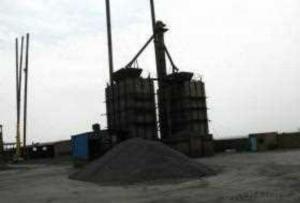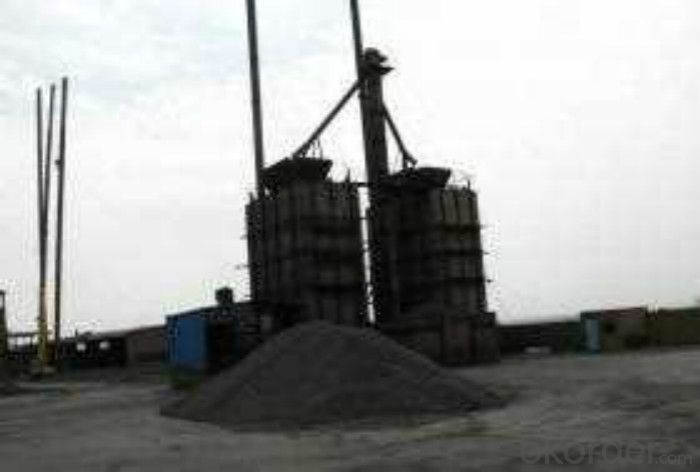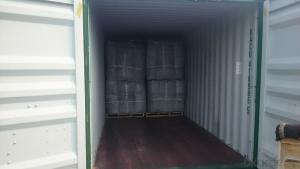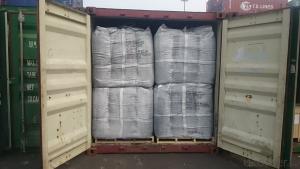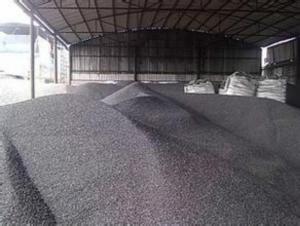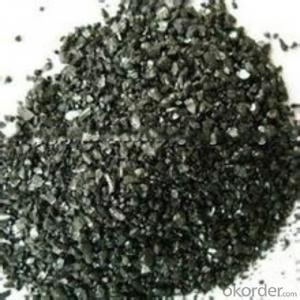GPC with lower Sulphur0.05% max in Low Ash
- Loading Port:
- Shanghai
- Payment Terms:
- TT OR LC
- Min Order Qty:
- 23 m.t.
- Supply Capability:
- 5003 m.t./month
OKorder Service Pledge
OKorder Financial Service
You Might Also Like
Introduction:
GPC has good characteristics with low ash, low resistivity, low sulphur, high carbon and high density. It is the best material for high quality carbon products. It is used as carbon additive in steel industry or fuel.it is playing more and more important role in the industry
Features:
1.Our strong team provide you reliable service that make you feel purchasing is more easier
2. We ensure that we can supply capability with competitive price.
3. Work strictly to guarantee product quality,
4. Highest standard of integrity. Guarantee customer's benefit.it is playing more and more important role in the industry
Specifications:
F.C.% | 95MIN | 94MIN | 93MIN | 92MIN | 90MIN | 85MIN | 84MIN |
ASH % | 4MAX | 5MAX | 6 MAX | 6.5MAX | 8.5MAX | 12MAX | 13MAX |
V.M.% | 1 MAX | 1MAX | 1.0MAX | 1.5MAX | 1.5MAX | 3 MAX | 3 MAX |
SULFUR % | 0.3MAX | 0.3MAX | 0.3MAX | 0.35MAX | 0.35MAX | 0.5MAX | 0.5MAX |
MOISTURE % | 0.5MAX | 0.5MAX | 0.5MAX | 0.5MAX | 0.5MAX | 1MAX | 1MAX |
Pictures
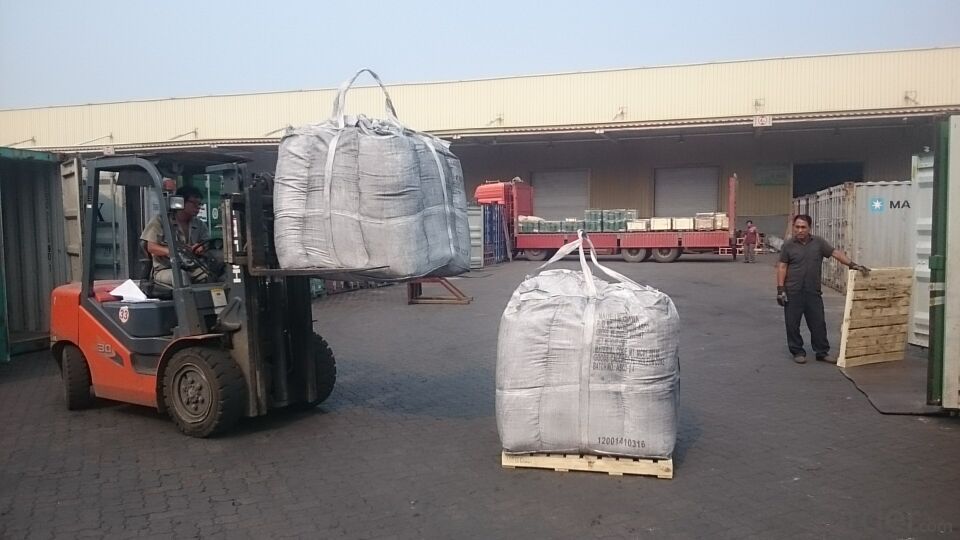
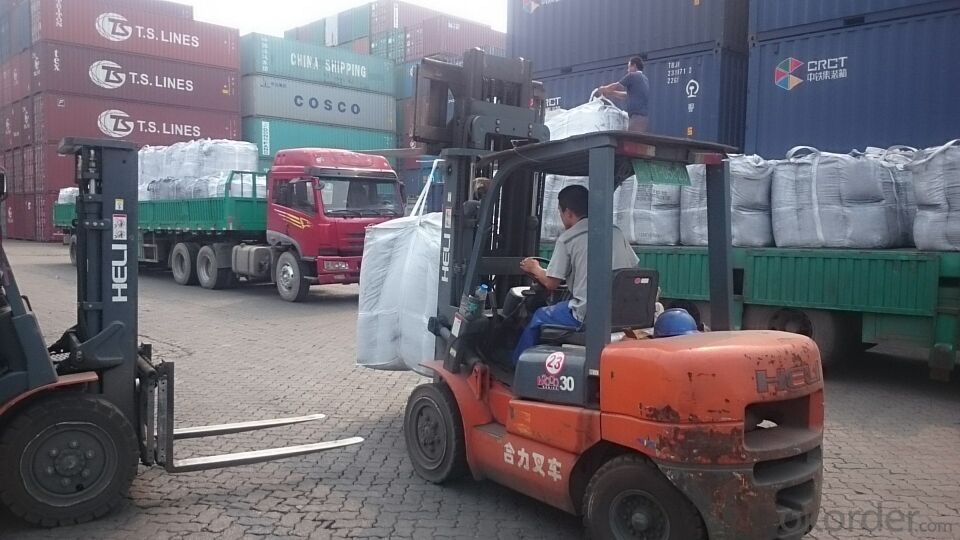
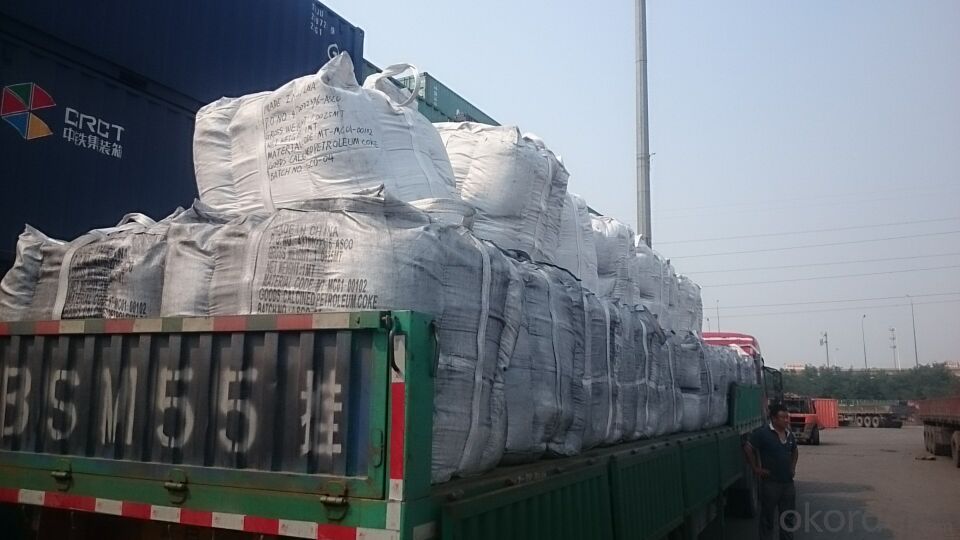
FAQ:
1. Your specification is not very suitable for us.
Please offer us specific indicators by TM or email. We will give you feedback as soon as possible.
2. When can I get the price?
We usually quote within 24 hours after getting your detailed requirements, like size, quantity etc. .
If it is an urgent order, you can call us directly.
.
4. What about the lead time for mass product?
The lead time is based on the quantity, about 7-15 days. For graphite product, apply Dual-use items license need about 15-20 working days.
5. What is your terms of delivery?
We accept FOB, CFR, CIF, EXW, etc. You can choose the most convenient way for you. Besides that,
we can also shipping by Air and Express.
6. Product packaging?
We are packed in bulk ship or in ton bag or placing in container or according to your requirements.
7. Notice
please note that the price on Alibaba is a rough price. The actual price will depends on raw materials, exchange rate wage and your order quantity .Hope to cooperation with you, thanks !
- Q: What is the carbon content of different types of rocks?
- The carbon content of different types of rocks varies significantly. Generally, sedimentary rocks such as limestone and shale contain higher carbon content due to their formation from organic matter. Igneous and metamorphic rocks, on the other hand, typically have lower carbon content as they are formed from molten material and intense heat and pressure, respectively.
- Q: How does carbon impact soil health?
- Carbon plays a crucial role in maintaining and improving soil health. It is a key component of organic matter, which is essential for fertile and productive soils. When carbon is added to the soil through the decomposition of plant and animal residues, it helps to improve the soil structure, water holding capacity, and nutrient availability. One of the primary ways carbon impacts soil health is through its ability to enhance soil structure. Carbon binds with soil particles to form aggregates, which create pore spaces in the soil. These pore spaces allow for better aeration, water infiltration, and root penetration. Good soil structure promotes the growth of beneficial soil organisms like earthworms and microorganisms, which further contribute to soil health. Carbon also plays a crucial role in improving the water holding capacity of soils. Organic matter, rich in carbon, acts as a sponge by holding moisture and preventing water runoff. This is particularly important in arid or drought-prone regions where water scarcity is a concern. Improved water retention in soils not only helps plants withstand dry periods but also reduces erosion and nutrient leaching. Furthermore, carbon is a vital nutrient for soil microbes. Microorganisms, such as bacteria and fungi, break down organic matter, releasing nutrients that are essential for plant growth. Carbon-rich soils provide a favorable environment for these microorganisms to thrive, leading to increased nutrient availability for plants. Additionally, as microorganisms decompose organic matter, they release beneficial substances like enzymes and hormones that further support plant growth and overall soil health. In conclusion, carbon greatly impacts soil health by improving soil structure, enhancing water holding capacity, and promoting nutrient availability. Therefore, managing and increasing carbon content in soils through practices like adding organic amendments, cover cropping, and reducing tillage can greatly benefit agricultural productivity and sustainability.
- Q: How is carbon used in the production of adhesives?
- Carbon is used in the production of adhesives in several ways. One common method involves the use of carbon black, which is a fine powder made from the incomplete combustion of hydrocarbon fuels. Carbon black is added to adhesives to improve their strength, durability, and resistance to UV radiation. It acts as a reinforcing agent, increasing the adhesion and cohesion properties of the adhesive. Additionally, carbon fibers are sometimes incorporated into adhesives to further enhance their strength and mechanical properties. These fibers are made by heating and stretching synthetic fibers or natural materials like rayon or petroleum pitch. When added to adhesives, carbon fibers provide increased tensile strength and stiffness, making them ideal for applications that require high-performance adhesives. Moreover, carbon-based polymers, such as epoxies and polyesters, are widely used in adhesive formulations. These polymers are created through chemical reactions involving carbon-based monomers. They offer excellent bonding properties, high resistance to heat and chemicals, and can be tailored to specific application requirements. Furthermore, carbon-based resins can be modified with other additives and fillers to achieve specific characteristics, such as flexibility, impact resistance, or flame retardancy. In summary, carbon is utilized in the production of adhesives through the incorporation of carbon black, carbon fibers, and carbon-based polymers. These materials significantly enhance the strength, durability, and other properties of adhesives, making them suitable for a wide range of applications in industries such as automotive, construction, electronics, and aerospace.
- Q: How does carbon impact food production?
- Carbon impacts food production in several ways. Firstly, carbon dioxide (CO2) is a crucial component for photosynthesis, the process through which plants convert sunlight into energy. Increased levels of atmospheric CO2 can enhance plant growth and crop yields. However, excessive carbon emissions from human activities, such as burning fossil fuels, contribute to the greenhouse effect, leading to climate change. Climate change affects food production by altering temperature and rainfall patterns, increasing the frequency and intensity of extreme weather events like droughts, floods, and storms. These changes disrupt agricultural systems, decrease crop productivity, and threaten food security. Additionally, carbon emissions contribute to air pollution, which can harm crop health and reduce yields. Therefore, managing carbon emissions and mitigating climate change are crucial for sustainable and resilient food production.
- Q: What is carbon nanoelectronics?
- The field of research and development known as carbon nanoelectronics focuses on using carbon-based materials, like carbon nanotubes or graphene, to create and advance electronic devices and components on a nanoscale level. These tiny carbon structures have unique electrical properties that make them highly desirable for a wide range of electronic devices, including transistors, sensors, and interconnects. One of the main advantages of carbon nanoelectronics is the exceptional electrical conductivity and thermal properties of carbon nanomaterials. For example, carbon nanotubes have excellent electrical conductivity, comparable to copper, but with a much smaller size. This allows for the creation of smaller and more efficient electronic devices, leading to advancements in miniaturization and energy efficiency. Another important aspect of carbon nanoelectronics is the incredible strength and flexibility of carbon nanomaterials. Graphene and other carbon-based structures have exceptional mechanical properties, making them highly durable and resilient. This makes it possible to produce flexible and wearable electronic devices that can adapt to different surfaces, opening up new opportunities for electronics design and integration. Furthermore, carbon nanoelectronics offers the potential for high-speed and low-power electronic devices. Carbon nanomaterials have unique electronic properties that allow them to carry electric charge at extremely high speeds, making them suitable for high-frequency applications. Additionally, the low power consumption of carbon nanomaterials can lead to the development of energy-efficient electronic devices. In conclusion, carbon nanoelectronics has the potential to revolutionize the field of electronics by enabling the creation of smaller, faster, and more energy-efficient devices. Ongoing research and development in this field are expected to bring about breakthroughs in various industries, such as computing, telecommunications, healthcare, and energy.
- Q: Carbon emissions trading stocks latest list of carbon emissions trading stocks what?
- Carbon trading concept of a total of 21 listed companies, of which 12 carbon trading concept listed companies trading on the Shanghai Stock Exchange, and 9 other carbon trading concept listed companies trading in the Shenzhen stock exchange.Automatic matching based on the cloud financial leading excavator, carbon trading stocks leading shares most likely from the following stock was born in Tianke, electrical, environmental protection up to confidence.
- Q: How does carbon impact the availability of freshwater resources?
- Carbon impacts the availability of freshwater resources through various interconnected processes. One of the major ways carbon affects freshwater availability is through climate change. The increased levels of carbon dioxide in the atmosphere, primarily due to human activities such as burning fossil fuels, contribute to global warming. This leads to changes in precipitation patterns, including altered rainfall distribution and intensity. Warmer temperatures caused by carbon emissions can increase evaporation rates and lead to more frequent and severe droughts in certain regions. This reduces the amount of water available for freshwater resources such as rivers, lakes, and reservoirs. Additionally, the changing climate can disrupt natural water cycles, affecting the recharge of groundwater aquifers, which are crucial sources of freshwater. Furthermore, carbon impacts the quality of freshwater resources. Acid rain, a result of increased carbon emissions reacting with atmospheric moisture, can acidify freshwater bodies and make them inhospitable for many aquatic organisms. This disrupts ecosystems and can lead to the loss of species that rely on freshwater resources for their survival. Another way carbon impacts freshwater availability is through its influence on land use. The conversion of forests and wetlands into agricultural or urban areas releases carbon stored in vegetation and soil. This not only contributes to carbon emissions but also reduces the capacity of natural ecosystems to retain and filter water. Forests, for example, play a vital role in maintaining the water cycle by absorbing rainfall and releasing it gradually into streams and groundwater. Deforestation disrupts this process and can lead to decreased water availability downstream. In conclusion, carbon emissions have a significant impact on the availability of freshwater resources. Through climate change, carbon alters precipitation patterns, leading to droughts and reduced water availability. It also affects the quality of freshwater through processes like acid rain. Additionally, land-use changes driven by carbon emissions can further decrease freshwater availability by disrupting natural water cycles.
- Q: Search for a summary of the importance of carbon in life. If you write well, you can add points,
- The carbon containing compounds exist in hundreds of thousands, divided into inorganic and organic compounds in two categories, known as carbon containing inorganic substances in daily life and industrial and agricultural production is the raw material of carbon calcium carbonate as food additive sodium, sodium bicarbonate, calcium carbonate and lime material acetylene gas (acetylene), chemical fertilizer ammonium bicarbonate, chemical gases such as carbon dioxide.
- Q: What type of carbon copy sheet can be printed on? How many copies?
- Printed in carbon free carbon paper, usuallyUpper: whiteMedium: RedNext: yellowMainly depends on how much you want to print.
- Q: What is the primary source of carbon monoxide in the atmosphere?
- The incomplete combustion of fossil fuels stands as the main contributor to carbon monoxide found in the atmosphere. Whenever coal, oil, or natural gas is burned for energy generation, transportation purposes, or industrial procedures, carbon monoxide is inevitably discharged into the air. Despite natural sources like volcanic eruptions and forest fires having the potential to augment the presence of carbon monoxide in the atmosphere, the majority of emissions can be firmly linked to human activities. As a result, addressing carbon monoxide is crucial in safeguarding both human health and the environment.
Send your message to us
GPC with lower Sulphur0.05% max in Low Ash
- Loading Port:
- Shanghai
- Payment Terms:
- TT OR LC
- Min Order Qty:
- 23 m.t.
- Supply Capability:
- 5003 m.t./month
OKorder Service Pledge
OKorder Financial Service
Similar products
Hot products
Hot Searches
